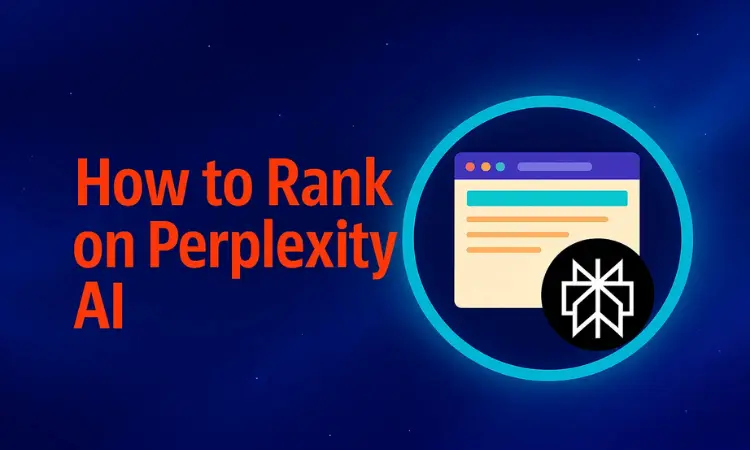What Are Text Links?
Text links are clickable elements linking multiple websites or linking pages of a single website together. They are a bridge to navigate online platforms meant to refine your search.
Although there are several ways, including image links, to drive web traffic to the desired site, text links are more promising as far as SEO benefits are concerned.
These links come in different types, but not all serve the same purpose. Backlinks, for example, steer the digital audience from other sites to your website, whereas deep links pilot them to different pages found on another site. Likewise, navigation links make surfing on the same site a breeze, while anchor links help you jump to the relevant part of a linked page.
Despite their unique functionality, text links work in harmony to achieve a common goal: higher visibility in search results. So, if you wish to navigate websites or increase your online traffic and prominence seamlessly, this guide is a perfect start.
Why Are Text Links Important in Digital Content?
Text links are the backbone of any web page on the internet. Regardless of their type or function, they draw a fine line between high-quality and low-reach content in the digital realm. However, it is essential to fully understand the potential of these clickable phrases and the worth they bring to the table to fully understand their potential.
-
For User-Friendly Navigation
Surfing through the limitlessness of the internet can take a toll. Without clear signs, reaching a target digital address may seem impossible. This is where a text link comes in.
Text links serve as signposts on the digital road for course correction. You can effectively trace a domain name and land on the correct linked page with a mere click. While it may seem small, text links can save hours of research and unintended binge sessions.
-
For Enhancing SEO Performance
The internet is home to millions of websites, and tracing each can be daunting, even for search engines. So, instead of skimming through all of them, they rank the linked page or pages based on your input and the quality of the text links pointing in that direction.
If several links, like image links or hyperlinks, narrow down a webpage or website with the anchor text matching the keyword you search, the search engines will deem it relevant. Consequently, they will rank them higher on the search results ladder.
-
For Enriching Content with Resources
It’s common to come across unfamiliar chunks of text, images, and terms as you skim through the digital world. However, they do spark curiosity among readers. Rather than cramming all the information on the same page, a hyperlink to a pertinent site can create doorways for more contextual content without cluttering the digital space.
Acquiring insights into related contexts becomes effortless and stress-free, all because of a minute text link.
How Do Text Links Work?
If we departmentalize the internet, the text link would be the logistics department—managing resources and moving the online traffic to its final destination. Whether anchor links or inline links, text links make searching the internet accessible for anyone.
However, to ensure the job gets done in an orderly fashion, text links utilize HTML code to create a bridge between different websites. Upon clicking, the link leads the internet traffic to a new website with relevant content.
-
HTML Syntax for Creating a Text Link
HTML is known for its simplicity, and text links can be used well. The basic syntax to create a text link uses the <a> tag representing the anchor, whereas the “href” stipulates the destination URL. Here is how it looks:
<a href=”destination_url_here”>Link Text Here</a>
To fit it into web content, you must embed this code in the body of an HTML document. Upon viewing it in your browser, the input text will appear as a clickable link that directs online traffic to the intended page.
-
Importance of Anchor Text for User Experience
Sites with high traffic often deploy simple tactics to win readers’ attention. Among several schemes, the proper use of anchor text and superior text links reign supreme.
These websites often utilize anchor text explaining what the user can expect on the other side. This helps build users’ trust and accessibility to valuable content.
On the contrary, vague anchor text on a webpage confuses the reader and even deters them from clicking the link altogether. A descriptive link text can make a world of difference in the digital landscape.
Types of Text Links Based on Purpose
There are many different types of text links, each driven by a unique purpose. While some connect the dots on a webpage, others focus on link-building and creating pathways to access other websites.
-
Internal Links for Site Navigation
As the name implies, internal links are liaisons between various web page sections. They serve as mediators between pages of the same website to minimize time consumption and help you navigate to your favorite content.
Readers can effortlessly find relevant content on the website with their assistance while being encouraged to explore further.
-
External Links for Referencing Other Sites
In contrast, external links direct online traffic to a destination outside of the current website domain.
They have a simple yet unique purpose: to navigate web communities to trusted third-party resources that resonate with the material found on the current website to establish credibility.
-
Nofollow Links for Non-Endorsed Content
Nofollow links are unique tags website owners introduce to regulate how search engines see hyperlinks on online platforms. They do so when there exists a sense of mistrust toward a particular text link and, sometimes, to mitigate spam.
In some cases, you can even use them to protect your reputation by disassociating from an untrusted source or to gain monetary benefits.
Types of Text Links Based on Functionality
Apart from directing online traffic from one page to another, text links differ extensively in functionality. Some are responsible for correlating scattered digital content to make the whole group more meaningful. Others almost instantly see you through trusted external resources, including images, documents, and other websites.
-
Text Links in Web Pages
The sheer amount of online information can be overwhelming, especially for time-sensitive endeavors. However, a text link can provide a shortcut through a sea of online content and help you tap the right resources without investing extra time and energy, linking appropriate URLs or interconnecting different categories on the same page.
-
Text Links in Emails
In emails, text links allow recipients to access the anticipated website, article, products, and other resources listed online with one click.
While a website’s primary focus is user experience, here, it becomes more about accessibility and convenience.
-
Text Links in PDFs
Documents such as PDFs often incorporate hyperlinks or text links within the manuscript. This provides a convenient scheme for the target audience to access other papers or web pages.
This is done by creating a hyperlink within a text body using PDF annotation tools.
Best Practices for Using Text Links
Text links can make or break a website’s SEO rankings. While they are an excellent addition to any site for multiple reasons, webmasters must use them correctly.
You can maximize their benefits by simply following a set of best practices.
-
Using Clear and Descriptive Anchor Text
The correct use of anchor text illustrates the quality of the text link itself. Clear and vivid anchor text almost always draws the audience’s attention since it hints at the composition of the content present on the other side.
This provides a sense of credibility and trustworthiness about the information displayed on the current web page.
-
Ensuring Links Lead to Relevant Content
Another best practice is choosing a suitable link that resonates with your site’s content. Any text link leading to an off-topic source would disrupt the user experience.
Emphasize linking to sources that either support or extend the page’s purpose.
-
Balancing the Number of Links on a Page
In most cases, venturing beyond the optimum range of text links on each page is a red flag. Ideally, you must simultaneously line up high-priority links and ditch those that offer little to no value.
Also, remember to watch for online community behaviors and their overall interaction with these links.
Common Issues with Text Links and Solutions
Incorporating text links in your website is good practice, but it is also a job half done. Integrating text links is not a one-time job; it’s an ongoing process that most content creators tend to overlook.
This is when problems such as broken links, link spamming, and substandard links may surface.
-
Identifying and Fixing Broken Links
The most recurring issue you may face with text links is broken links. Broken links are dead-ends, and clicking on them will lead you to an error page—hence the name.
Luckily, they are easy to fix through website audits, which can be done at regular intervals, either manually or using automated software such as broken link checkers.
-
Strategies to Avoid Link Spamming
Excess of anything is bad, and this also applies to text links. Instead of stuffing links into your content, always focus on their quality and integrate only those that match your website’s theme.
However, ensure you incorporate them subtly and naturally, accompanied by a brief explanation of their relevance.
-
Ensuring Relevance of All Linked Content
The digital databases on the internet are continuously updated as new content appears in the digital realm. Therefore, to ensure your linked sources are not outdated, periodic reviews must be scheduled to maintain the authenticity of the conveyed information.
Future of Text Links in Web Development
Text links aren’t leaving us anytime soon. They are evolving as new technological breakthroughs arise. We will likely start seeing considerable changes in internet traffic behaviors and search engine algorithms.
Current SEO tools and techniques may evolve abruptly or become completely outdated by processes such as semantic linking and the use of AI-driven immersive links.
-
Impact of AI on Link Generation
The advent of AI has altered the internet community: from acquiring backlinks to improving search engine rankings to digital visibility, AI has impacted everything.
AI-powered algorithms analyze unimaginable amounts of data in the blink of an eye. This can help formulate AI-driven predictive analytics and help webmasters compare their competitors’ backlink profiles to generate similar high-quality links.
-
Evolving SEO Strategies for Text Links
As AI-driven algorithms enter the digital world, SEO strategies for text links will evolve.
Superior authoritative links will prevail, and we’ll observe a declining focus on their quantity. Likewise, polishing user experience will become a top priority in modern SEO strategies for text links, which must consider mobile and voice-related platforms.
-
Accessibility Considerations for Text Links
Making text links accessible to everyone is vital in narrowing the gap of varying digital experiences between people with disabilities and those without them.
Web admins must create links that are compatible with screen readers and keyboard-friendly for those with visual or mobile impairments.
Conclusion
Text links guide individuals through online resources. Whether navigating websites, bolstering engagement, or optimizing search engines, they facilitate connections across the expanse of online information.




















